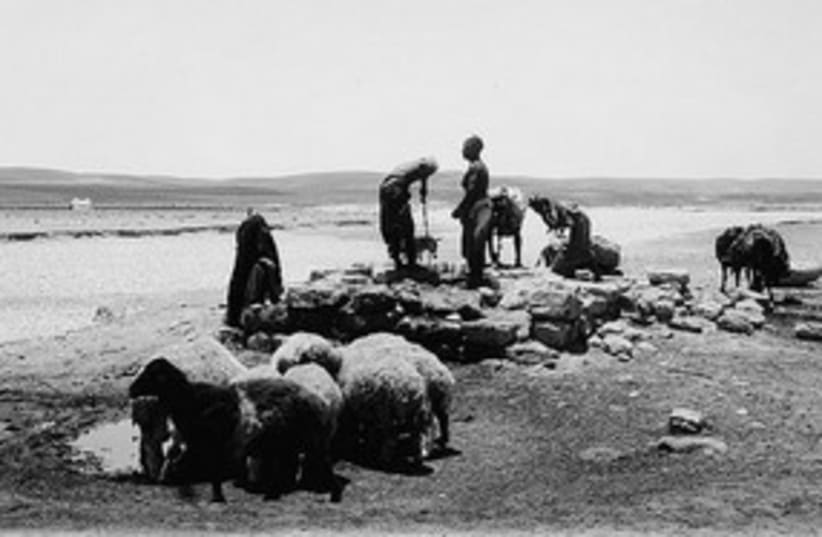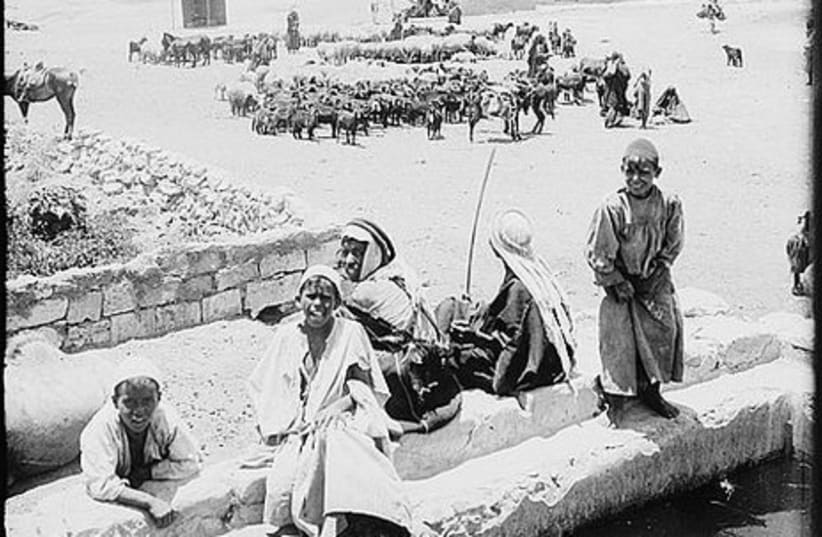
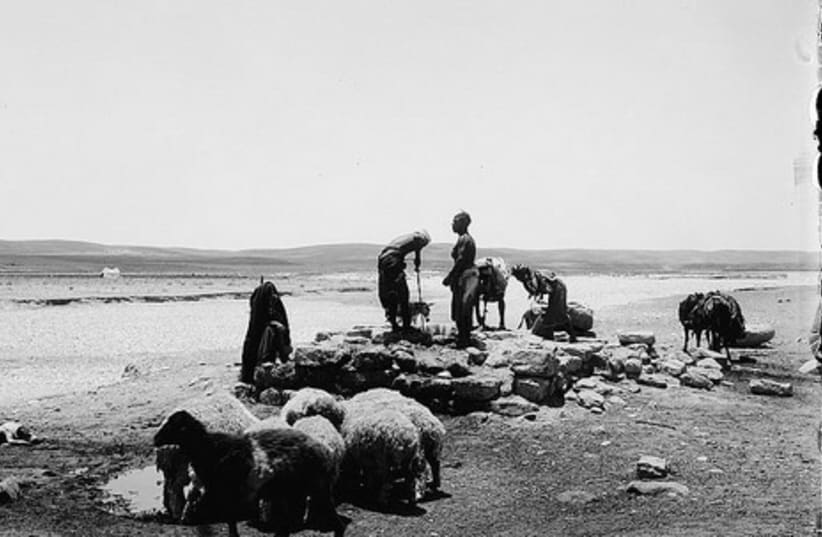
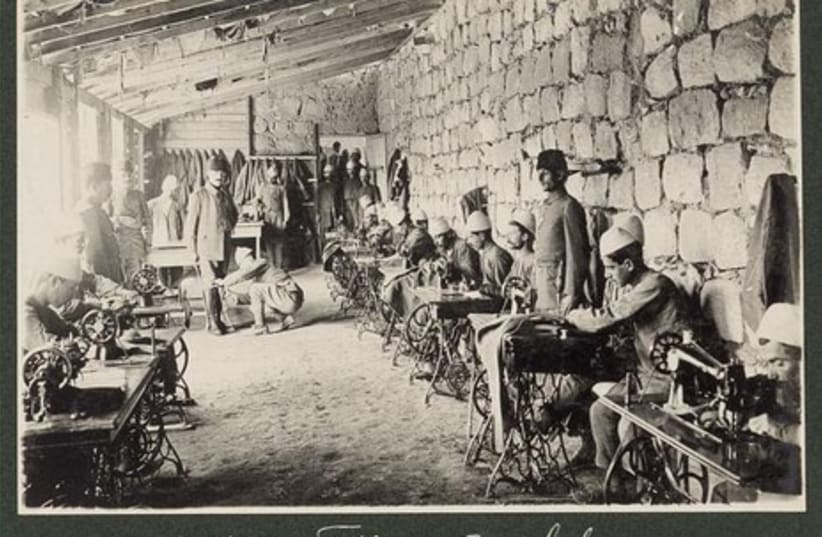
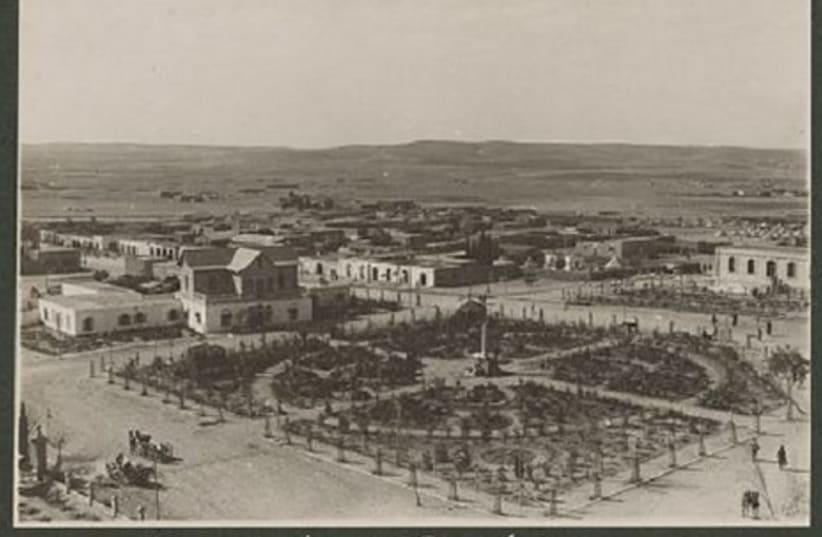
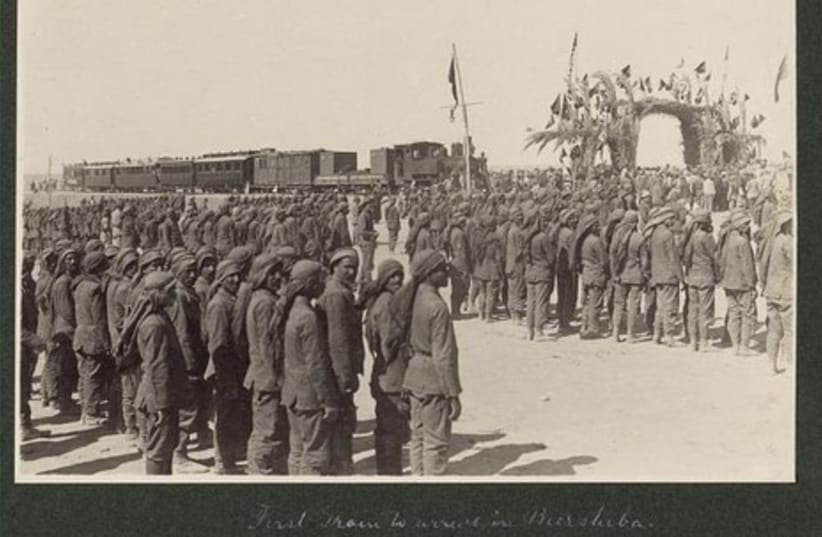

For centuries, Beersheba was little more than a desert oasis surrounded by scattered Bedouin tribes. In the 19th century the Ottoman Empire established a garrison in the village (“town” would be an exaggeration), and as war clouds gathered in the early 1900s, the Turkish army presence grew. The American Colony photographers recorded scenes of the town, showing it sparsely populated and almost barren. The photographers took pictures of some of the services that were established for the army – a tailor shop for uniforms, cobblers for the army boots, a mill for flour, etc.The present day Beersheba municipality reported that Jews arrived in Beersheba during this period to work in some of these services and to work on the railroad line and bridges to Beersheba.The largest building in Beersheba was the serai, an inn. The wells of Be’er Sheva were the only source of water in the region. During World War I, Beersheba was a supply center for the Turkish army and an anchor for Turkish-German defense line between Gaza and Be’er Sheva blocking the British army’s advance north from Sinai. The British attempted to break through the line at Gaza twice in March and April 1917, and they failed disastrously, losing thousands of men. More pictures can be viewed at www.israeldailypicture.com.
